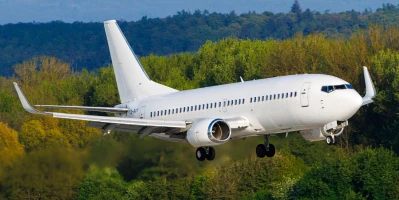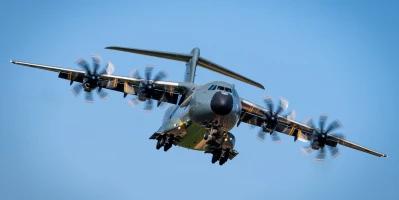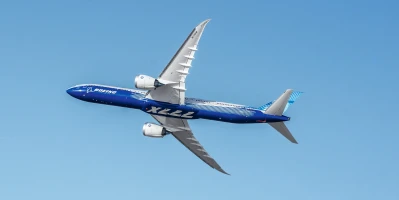good-to-know
Boeing 747: Queen of the Skies
The famous jumbo jet with the upper-deck hump will forever remain an icon of aviation. This pioneering giant democratized flying: a lasting success.
author: Andreas Spaeth | 5 mins reading time published on: 16.10.2025
author:
Andreas Spaeth
has been traveling the world as a freelance aviation journalist for over 25 years, visiting and writing about airlines and airports. He is frequently invited to appear on radio and TV programs to discuss current events in the sector.
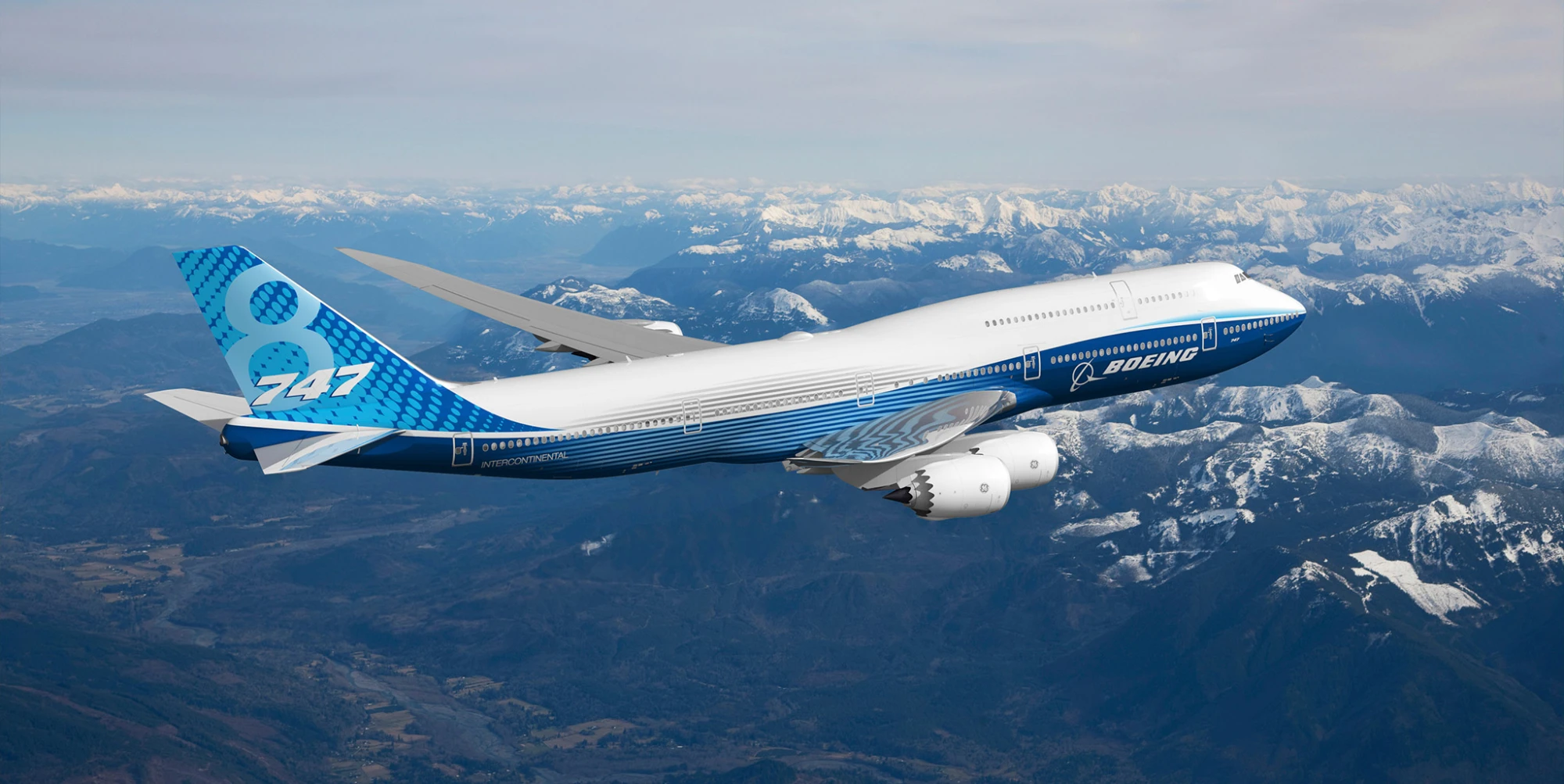
- Boeing 747: Queen of the Skies
- The Boeing 737: How a simple jet revolutionized aviation
- Airbus A400M – modern military transporter and all-around talent
- Airbus A220 – The innovative medium-haul jet from Canada
- Boeing 777X – the largest twin-engine jet in the world
- Airbus A321XLR: A new chapter for aviation
- The Airbus A380 – the world’s largest passenger aircraft
- Airbus A319 – a small aircraft for a wide range of tasks
- Airbus A320 – a medium-haul bestseller for almost 40 years
With her distinctive upper-deck hump, the Queen of the Skies is—along with the Concorde—probably the greatest icon among all commercial aircraft. Joe Sutter, the “father of the 747,” and his team of engineers, the “Incredibles” at Boeing, took the comparatively simple means of the 1960s and made the impossible possible. Developing this colossal aircraft in just four years is still considered one of the greatest achievements in commercial aviation. With its enormous interior, the Boeing 747 democratized flying: Since seats were available in such high numbers, ticket prices fell and air travel became affordable for the first time for broad sections of the population.
Suddenly, flights were being offered like everyday consumer goods—all thanks to the 747’s huge capacity. At the same time, the airlines lured wealthy premium customers with unimagined luxury, especially in the early days, with the opulently furnished upper-deck lounges in first class. But at the start of the 1970s, the aircraft’s first operators—especially the large U.S. domestic airlines—had enormous difficulties filling their jumbos with enough profitable passengers.
When the Boeing 747 entered passenger service in 1970, it was simply gigantic compared to all its predecessors. Never before and never since has there been such a quantum leap in aviation. While the Boeing 707 carried around 180 passengers, the jumbo suddenly offered space for almost 500 people—and this scale, unimaginably large for the time, also brought with it new handling challenges.
Few aircraft have won the hearts of the public quite like the unmistakable 747. And with a Boeing 747-8 as the future Air Force One, it will continue to accompany the U.S. president into the 2040s. Even after the end of production in 2023 and its gradual disappearance from scheduled services, this winged icon will not be forgotten.
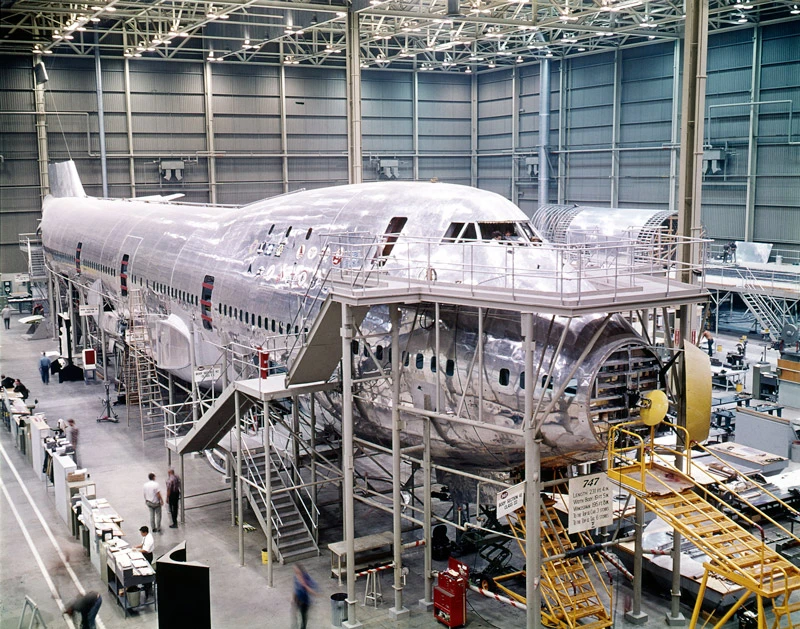

©Archiv Boeing Commercial Airplanes


©Archiv Boeing Commercial Airplanes
The aluminum covering of the 747 mock-up shines silver in late 1966, the first time that the actual dimensions of this giant could be appreciated.
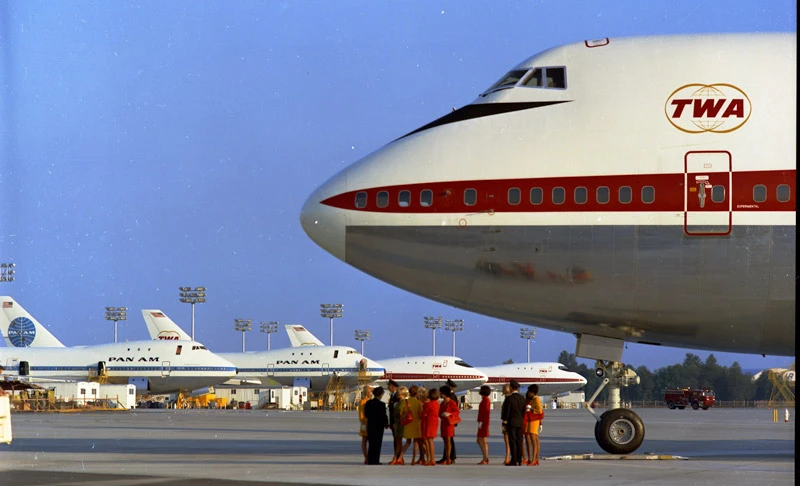

©Archiv Boeing Commercial Airplanes


©Archiv Boeing Commercial Airplanes
At the beginning of 1970, the first Boeing 747s were delivered to major U.S. customers and first operators Pan Am and TWA.
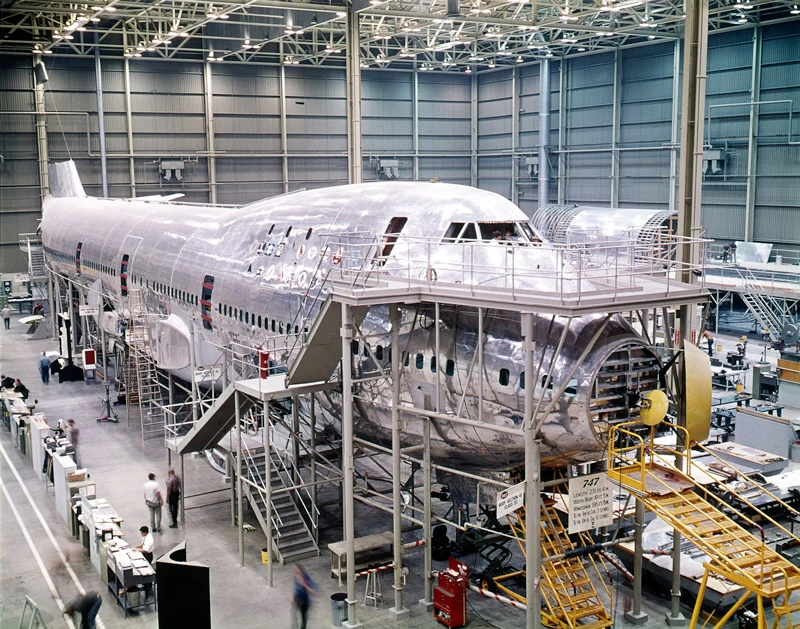
©Archiv Boeing Commercial Airplanes
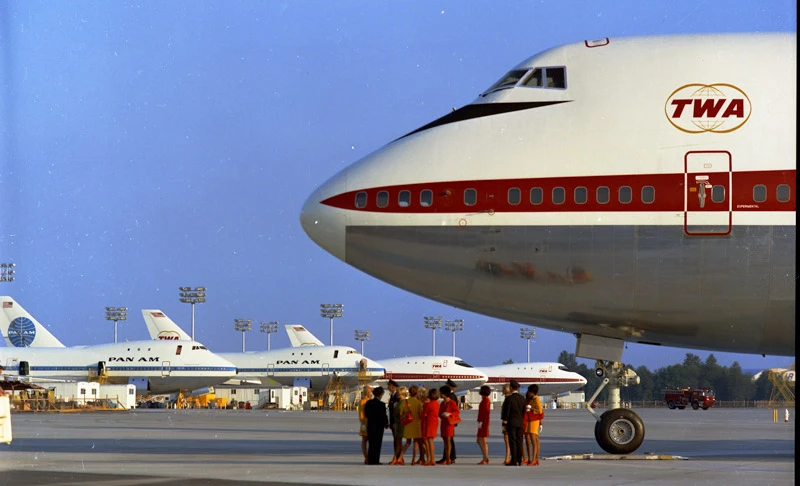
©Archiv Boeing Commercial Airplanes
Boeing 747 – Facts, figures, dates
-
The design of the 747 was based on a U.S. Air Force tender for a new widebody transport aircraft, with the cockpit positioned above the main deck to allow loading via a folding nose. Although Boeing lost the contract to Lockheed and its C-5 Galaxy, it did reach an informal agreement with Pan Am to build a passenger aircraft based on this design.
-
The Boeing plant in Everett, near Seattle, which opened in 1966 specifically to build the 747, was the largest building in the world by volume at the time—and it’s still in second place today.
-
On April 26, 1971, the then still small German leisure airline Condor made aviation history: It used a Boeing 747 for charter flights for the first time—initially with 470 economy seats in a single class, the highest seating capacity of any 747 at the time.
-
Important changes to the original fuselage design came with the 747SP, which was shortened by over 14 meters with an increased range, and the 747-300, which extended the upper deck for the first time. The final version, the 747-8, was extended by almost 6 meters compared to the standard fuselage—as was its upper deck.
-
Two of the most unusual 747 variants were designed for the transportation of oversized cargo. Two 747-100s were converted into Shuttle Carrier Aircraft, which transported the Space Shuttle until 2011, and four 747-400s were converted into widebody freighters and have been transporting Boeing 787 fuselage segments between plants since 2006.
-
The 747-400D, a short-haul version developed for Japanese domestic routes, offered space for up to 624 passengers—the highest capacity of all 747 variants.
Boeing 747
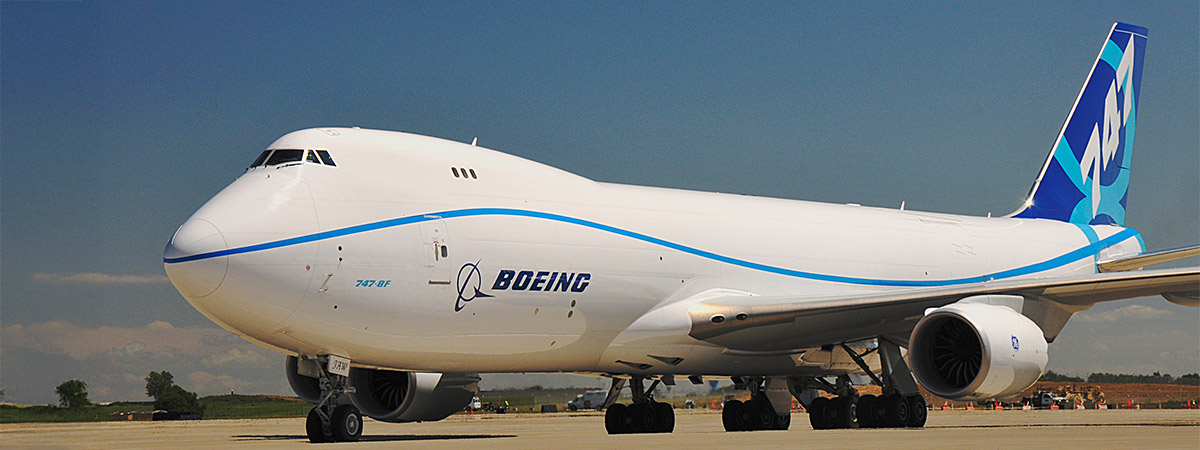
Boeing 747
- Type:
- Four-engine widebody aircraft
- Manufacturer/origin:
- Boeing Commercial Airplanes, Seattle, U.S.
- Maiden flight:
- February 9, 1969
- Entry into service:
- January 22, 1970, with Pan Am
- Produced:
- 1968–2023
- Number built:
- 1,574
- Length:
- 76.3 meters (747-8I)
- Wingspan:
- 68.4 meters (747-8I)
- Range:
- 14,815 kilometers (747-8I)
- Cruising speed:
- Mach 0.855 (747-8I)
- Seats (typical/maximum):
- 605/467 (747-8I)
The Boeing 747 engine: the GEnx
You may also be interested in following content

GEnx: Powering the Dreamliner and the Boeing 747
The GEnx engine from GE is based on the proven architecture of the GE90.
Since its introduction in 1970, the Boeing 747 has been powered by a variety of engine types, depending on the model and customer preferences. The early variants – the 747-100, -200, and -300 – were equipped with engines such as the Pratt & Whitney JT9D, the Rolls-Royce RB211, and the General Electric CF6.
The most recent and technologically advanced version, the Boeing 747-8, is powered exclusively by GE’s GEnx-2B engine. Designed as the successor to the highly successful CF6 – the best-selling engine for wide-body aircraft – the GEnx incorporates state-of-the-art materials and design technologies. These advancements have led to reductions in weight and noise emissions, lower maintenance costs, and increased performance.
MTU Aero Engines is a risk-and-revenue-sharing partner in the GEnx program with a 6.7 percent stake. The company is responsible for the development, production, and assembly of the turbine center frame (TCF). In doing so, MTU draws on its extensive experience with the TCF of the GP7000 engine, which has already proven its reliability. Under its program involvement, MTU Maintenance is also responsible for maintaining these turbine center frames.
GEnx-2B
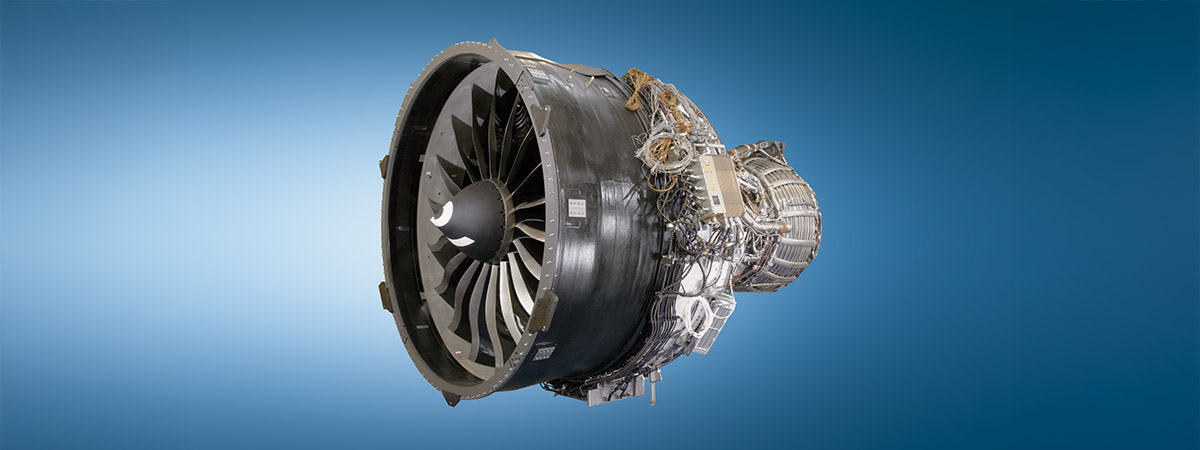
GEnx-2B
- Type:
- two-shaft turbofan engine
- Max. thrust:
- 66.500 lbf
- Bypass ratio (takeoff):
- 8,0
- Fan diameter:
- 8.8 ft
- MTU competencies:
- Development, manufacture and assembly of the turbine center frame and maintenance of the turbine center frame at MTU Maintenance Hannover.
Aviation journalist Andreas Spaeth recalls

“But more importantly, I finally got a feel for what it’s like inside when there are only three windows on each side of the upper deck, as was the case in all early 747s. This was changed to ten windows on each side starting in 1972.”
Aviation journalist
The jumbo’s most striking feature is its upper-deck hump. Over the years, I’ve experienced a wide variety of cabins up there; in the 747-400 and 747-8I, it’s usually given over to business class seating. I particularly appreciate the window seats, because the oval cross-section of the fuselage means there’s room for a spacious stowage box under the windows. It can hold everything from shoes to newspapers and is perfect as a shelf, or sometimes even for your feet. My biggest “eureka” moment on the upper deck, however, was at the Museum of Flight in Seattle.
This houses the 747 prototype from 1969, and the aircraft’s upper deck (which, in contrast to the main deck, isn’t open to the public, but I was allowed to go up) still features its original furnishings as a lounge, complete with the colorful fabric patterns of the time. But more importantly, I finally got a feel for what it’s like inside when there are only three windows on each side of the upper deck, as was the case in all early 747s. This was changed to ten windows on each side starting in 1972. Another exciting detail was that the prototype has an air refueling station in the rear, as an option for later military variants.
One of the most unusual 747 flights I’ve been on took place exclusively on the upper deck: in a Lufthansa Cargo Boeing 747-200F freighter, shortly before this type was taken out of service at the end of 2004. We flew from Frankfurt to Dakar and back on old first-class seats, with no partition to the cockpit—so we could lean back, relax, and watch the pilots. Anyone who was hungry or thirsty could help themselves in the small galley. Unforgettable.



